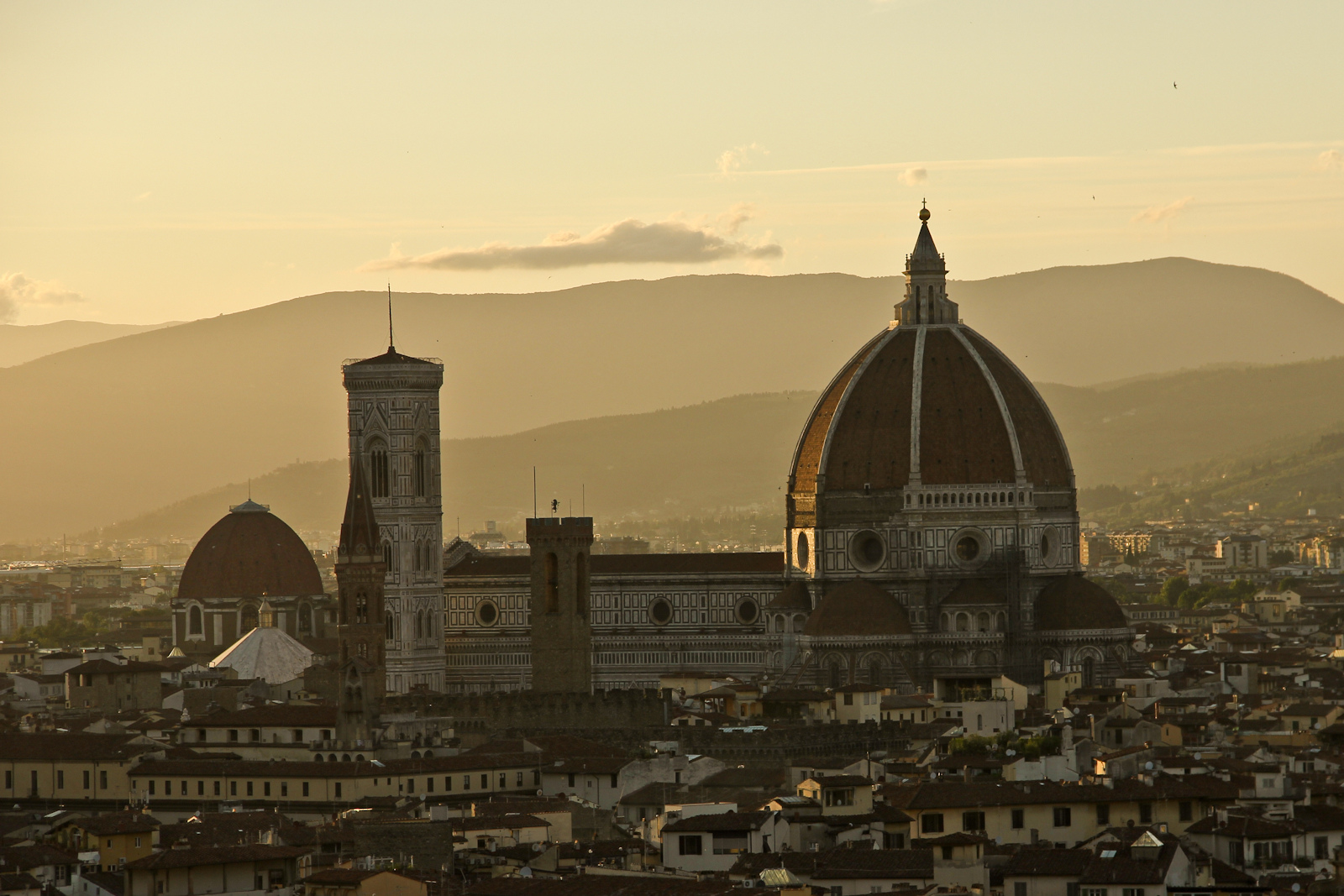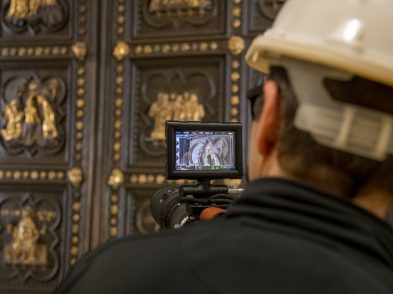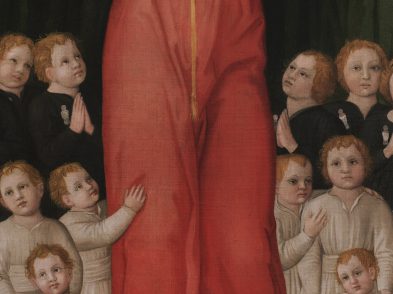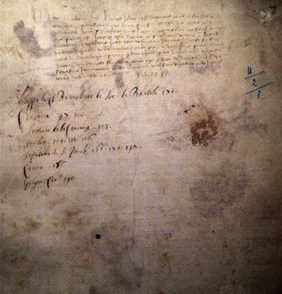Filmmaker David Battistella moved to Florence from Canada in 2011 to pursue his dream: writing and producing a feature film based on Ross King’s 2000 book Brunelleschi’s Dome, about the life of Filippo Brunelleschi and the building of Florence’s Cupola. This column, which began with TF 149, chronicles Battistella’s pursuit of his dream, including anecdotes of his new life in Florence and his efforts to finance and launch his ambitious project.
The wonderful clock inside the cathedral of Santa Maria del Fiore, on the west wall above the entrance doors of the cathedral, is a happy accident. It was never supposed to be a clock.
The space that the clock now occupies was intended for a large round rose window, a rosone, similar to the ones at the base of the Cupola.
In the initial design for the cathedral, a relatively small church was to be built on the site of the old church, Santa Reparata, remnants of which can be seen below the cathedral’s floor. However, 1351 brought a change of heart: the new building would be twice the proposed length, with a massive Cupola. This new plan thus laid the foundation for the architectural challenge-building a 55-meter Cupola-that Filippo Brunelleschi was born into and would resolve some 70 years later.
The expanded plan also posed a problem at the facade of the church. The window that was in the right place and of appropriate proportion for the smaller structure was now too small and in an awkward spot. Brunelleschi solved this problem, too. He closed the hole and installed a timepiece, something with which he was quite familiar, for he was first a watchmaker and built clocks.
His friend, the painter Paolo Uccello, painted the face of the clock. It depicts the writers of the four gospels Matthew, Mark, Luke and John. Matthew, Mark and John look to the center of the clock, which is said to represent Jesus and infinite time. Luke, instead, looks down onto the congregation, for he was the only author of the gospels who did not know Jesus.
The clock does not resemble the analog timepieces we know today. In those days, Europe used a 24-hour clock, but shifted time daily, according to the sunset. The clock in the cathedral is set to the ringing of the bells of Giotto’s tower. These bells are rung six times each day: always at 9am, 11:30am and noon. The afternoon bells then follow the changing moments of sunset through the year, ringing one hour before sunset, at sunset and one hour after sunset.
The afternoon bells dictate the time on the clock in the cathedral, which displays the number of hours since the last sunset. If, for example, it reads XV (15), this would mean that 15 hours has passed since the previous night’s sunset. On our clocks nine o’cock is always nine o’clock, on this clock nine o’clock is nine hours since last night’s sunset. The clock is still manually reset each season to account for the sun shifts of the season and the days.
And why are the bells of Giotto’s tower rung at 11:30am? They are the only ones in Florence that are rung at this time. Brunelleschi initiated this signal for the workers on the Cupola. It is said that if the quick-set mortar being mixed at ground level and raised to the construction zone was mixed just prior to the lunch break, the workers return from their pause to find the concrete set and therefore wasted. The 11:30am bell told the workers to stop preparing the mortar.
Today that 11:30am signal serves as a lovely reminder that the lunch hour approaches.
See photos of Brunelleschi’s clock and more at http://bit.ly/IqSCYd.









